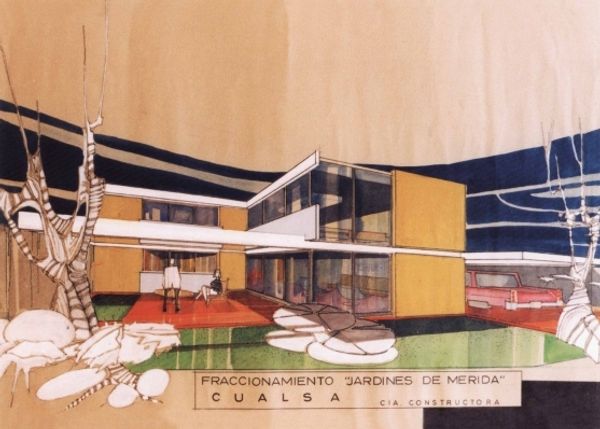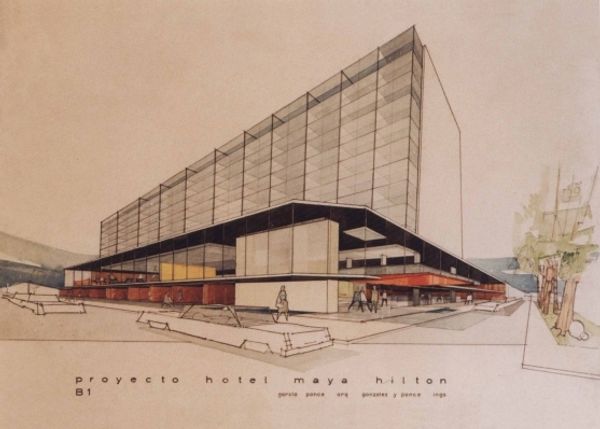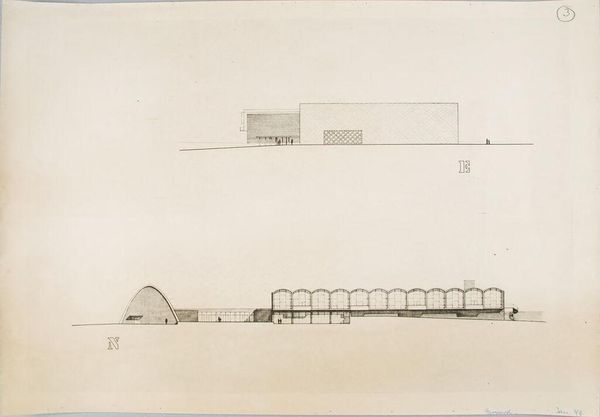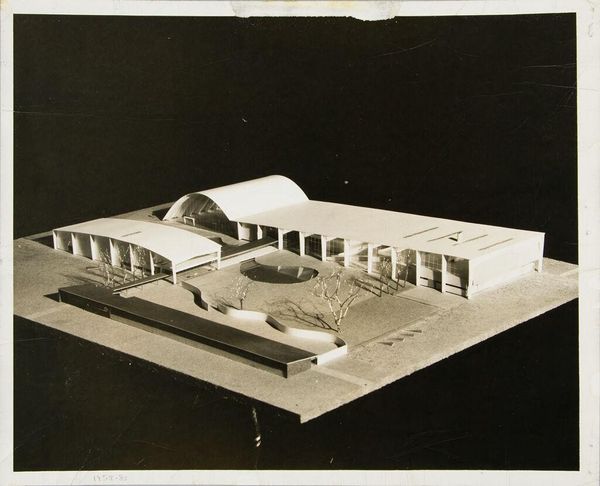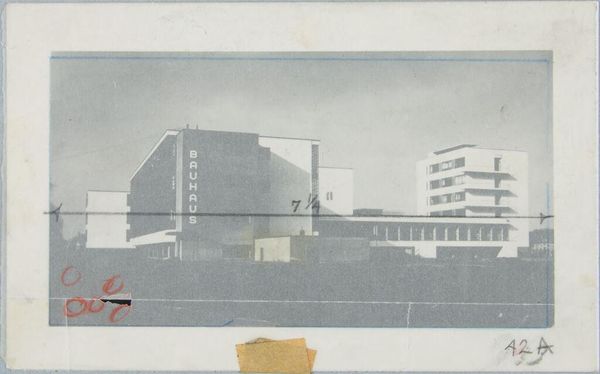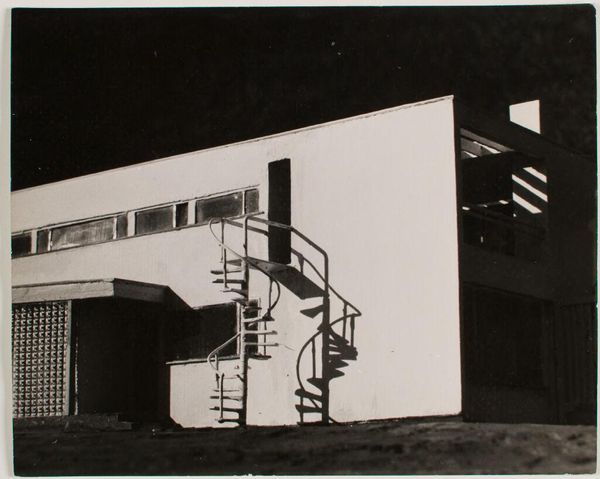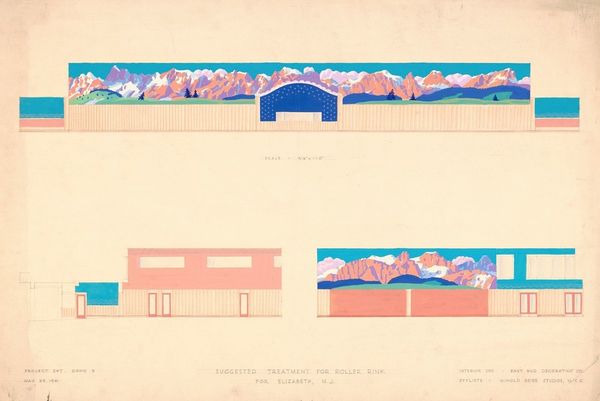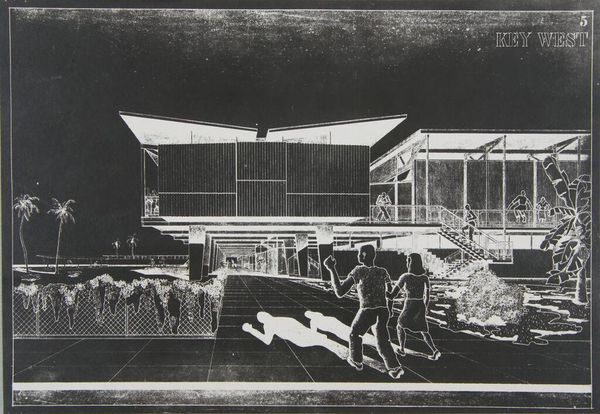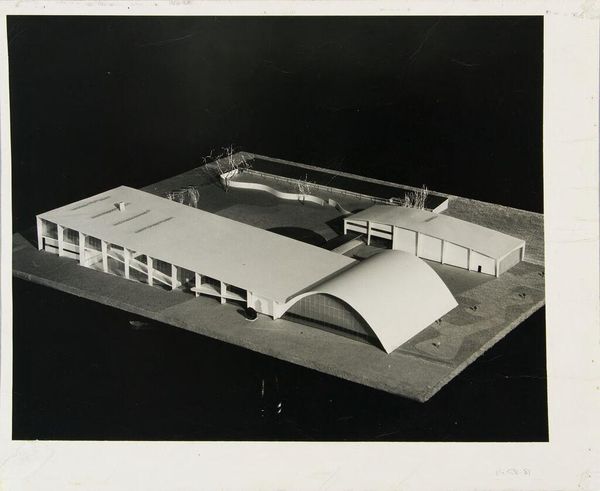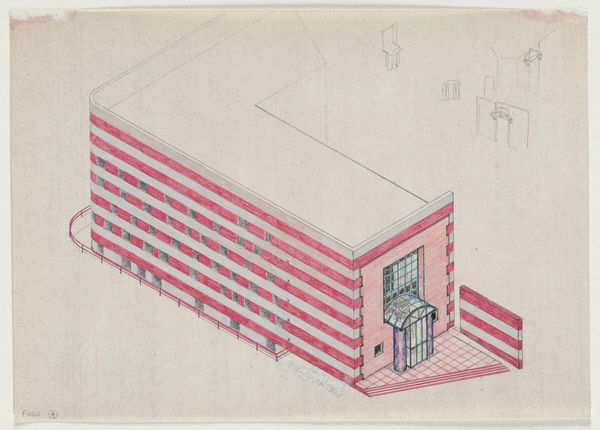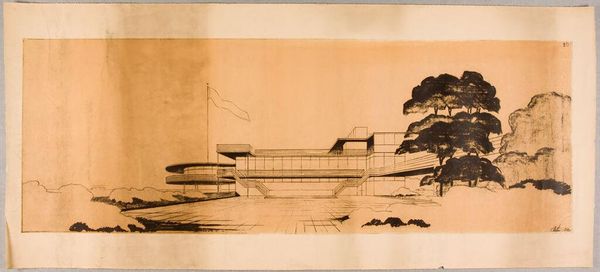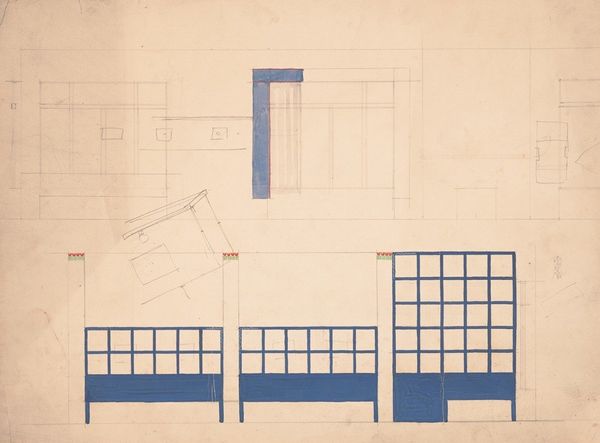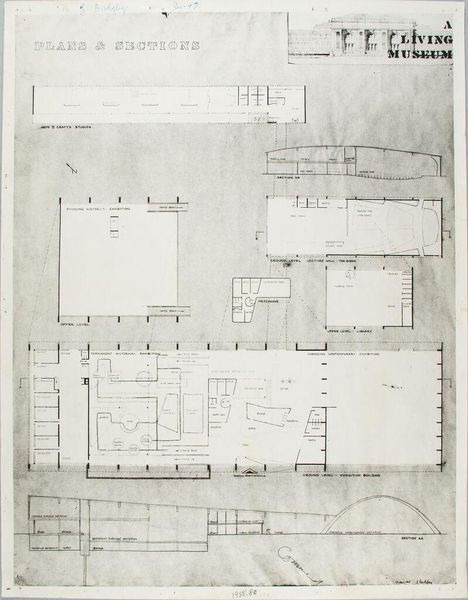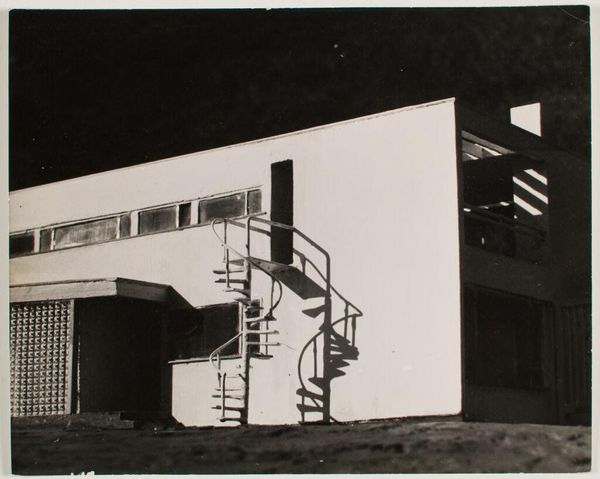
drawing, architecture
#
architectural sketch
#
house drawing
#
surveyor photography
#
architectural and planning render
#
drawing
#
building study
#
incomplete sketchy
#
study drawing
#
house
#
geometric
#
sketch
#
architectural section drawing
#
architectural drawing
#
architecture drawing
#
cityscape
#
modernism
#
architecture
#
building
Copyright: Fernando García Ponce,Fair Use
Curator: We're looking at Fernando García Ponce's architectural drawing, "Embotelladora Peninsular S.A.," created in 1966. It seems to be rendered in pen and ink, possibly with watercolor washes. Editor: My first impression? The severe angles give it a sense of forward momentum, almost like it's lunging into the future. The stark color palette really reinforces that feeling of detached, calculated progress. Curator: Indeed. Notice the interplay of geometric forms – the severe rectangular blocks juxtaposed with the slightly softened lines implying human figures. Ponce was deeply engaged with modernist principles. The way the architectural elements dominate, dwarfing the figures, reflects the shifting power dynamics in mid-20th century urban planning. Editor: Right, this piece makes me think about the impact that institutions can have on daily life, as the building almost looms over the pedestrians outside. Is it meant to invite the community in, or simply remain as a stalwart, structural reminder of economic and industrial power? Curator: And think about the function! "Embotelladora Peninsular," likely a bottling plant. The very essence of industrialized consumption captured in clean lines and sharp angles. Consider how this aesthetic distances itself from the messy reality of production. Editor: But look closer. There’s a looseness, a sketch-like quality that softens the blow. This isn’t a cold, unfeeling machine. The artist uses line weight and quick strokes to inject a sense of human intention back into what could otherwise be a completely depersonalized space. What about those almost transparent figures? Curator: A compelling point! These ghostly figures hint at labor and presence. The rendering underscores a period deeply interested in progress, with buildings such as these rising like icons. However, looking at it today reminds us that progress has consequences. Editor: Agreed, and Ponce seems acutely aware of that balance between aspiration and consequence. It’s a fascinating tension embedded in every line of this piece. Curator: A final thought; the geometric structure really stands in contrast with those indistinct figures, evoking thoughts about society's relationship to work and life during the height of Mexican modernism. Editor: It definitely invites introspection on architecture’s public role. The scale, style and industrial intention serve as a marker of our modern socio-political times.
Comments
No comments
Be the first to comment and join the conversation on the ultimate creative platform.
